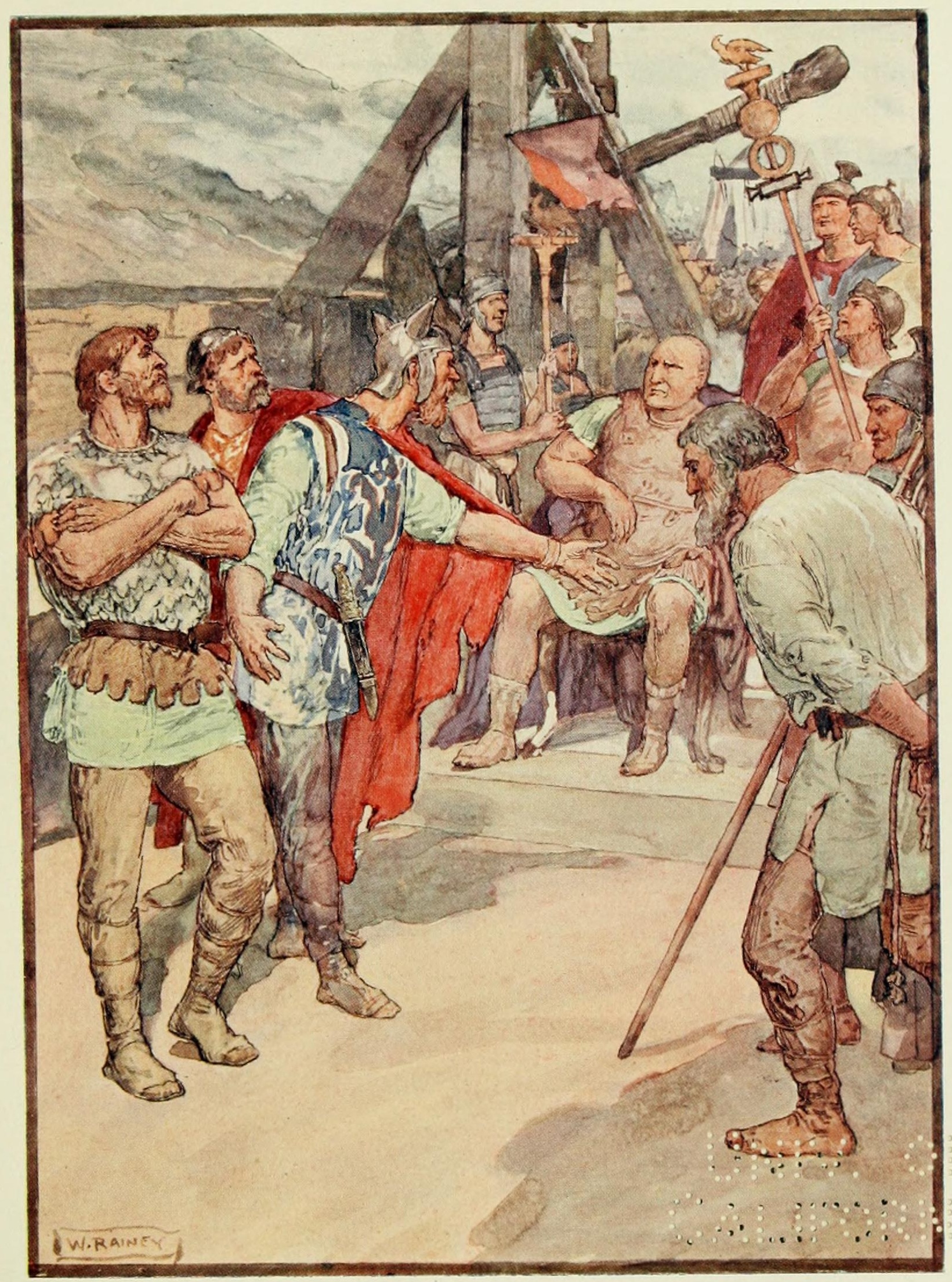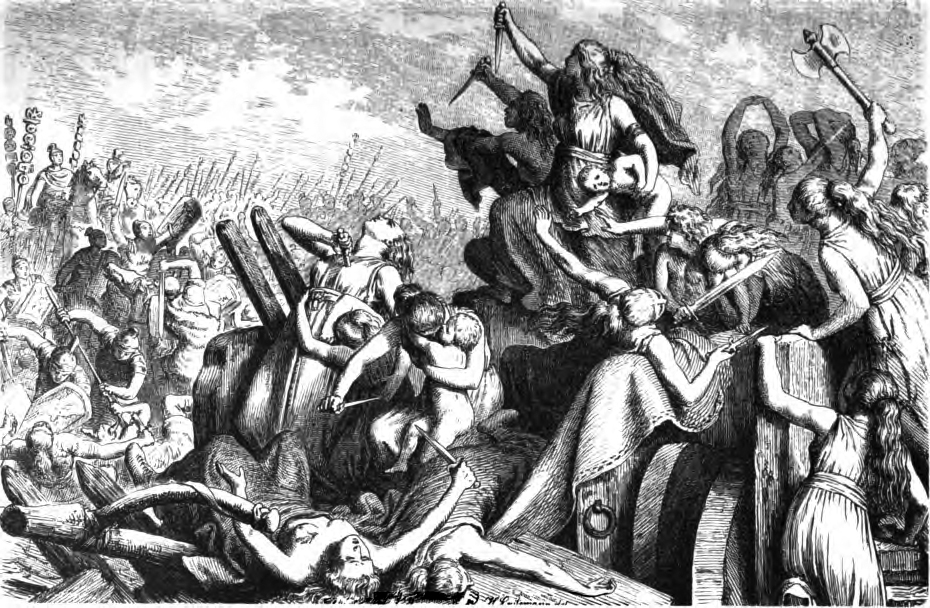|
1275 Cimbria
1275 Cimbria ( ''prov. designation'': ) is a Eunomia asteroid from the central regions of the asteroid belt, approximately in diameter. It was discovered on 30 November 1932, by astronomer Karl Reinmuth at the Heidelberg-Königstuhl State Observatory in southern Germany. The asteroid was named after the Cimbri, an ancient Germanic tribe. Orbit and classification ''Cimbria'' is a member of the Eunomia family (), a prominent family of typically stony asteroids and the largest one in the intermediate main belt with more than 5,000 members. The asteroid orbits the Sun in the central main-belt at a distance of 2.2–3.1 AU once every 4 years and 5 months (1,603 days). Its orbit has an eccentricity of 0.17 and an inclination of 13 ° with respect to the ecliptic. It was first identified as at Simeiz Observatory in October 1914. The body's observation arc begins with its official discovery observation at Heidelberg in 1932. Naming This minor planet was named after the C ... [...More Info...] [...Related Items...] OR: [Wikipedia] [Google] [Baidu] |
Lightcurve
In astronomy, a light curve is a graph (discrete mathematics), graph of the Radiance, light intensity of a celestial object or region as a function of time, typically with the magnitude (astronomy), magnitude of light received on the ''y''-axis and with time on the ''x''-axis. The light is usually in a particular frequency interval or frequency band, band. Light curves can be periodic, as in the case of eclipsing binary, eclipsing binaries, Cepheid variables, other periodic variables, and Methods of detecting extrasolar planets#Transit photometry, transiting extrasolar planets; or aperiodic, like the light curve of a nova, cataclysmic variable star, supernova, gravitational microlensing, microlensing event, or binary as observed during occultation events. The study of a light curve and other observations can yield considerable information about the physical process that produces such a light curve, or constrain the physical theories about it. Variable stars Graphs of the ap ... [...More Info...] [...Related Items...] OR: [Wikipedia] [Google] [Baidu] |
Eunomia Asteroid
In Greek mythology, Eunomia () was a minor but important goddess of law and legislation and her name can be translated as "good order", "governance according to good laws", as well as the spring-time goddess of green pastures (''eû'' means "well, good" in Greek, and νόμος, ''nómos'', means "law", while pasturelands are called ''nomia''). She is by most accounts the daughter of Themis and Zeus. Her opposite number was Dysnomia (Lawlessness). Horae Eunomia was the goddess of law and legislation and one of the Second Generation of the Horae along with her sisters Dikē and Eirene. The Horae were law and order goddesses who maintained the stability of society, and were worshipped primarily in the cities of Athens, Argos and Olympia. From Pindar: ''Eunomia'' and that unsullied fountain '' Dikē'', her sister, sure support of cities; and '' Eirene'' of the same kin, who are the stewards of wealth for humanity—three glorious daughters of wise-counselled Themis.Pindar, Thirt ... [...More Info...] [...Related Items...] OR: [Wikipedia] [Google] [Baidu] |
Gaius Marius
Gaius Marius (; – 13 January 86 BC) was a Roman general and statesman. Victor of the Cimbrian War, Cimbric and Jugurthine War, Jugurthine wars, he held the office of Roman consul, consul an unprecedented seven times. Rising from a family of smallholders in a village called Ceraetae in the district of Arpinum, Marius acquired his initial military experience serving with Scipio Aemilianus at the Siege of Numantia in 134 BC. He won election as tribune of the plebs in 119 BC and passed a law limiting aristocratic interference in elections. Barely elected praetor in 115 BC, he next became the governor of Further Spain where he campaigned against bandits. On his return from Spain he married Julia (wife of Marius), Julia, the aunt of Julius Caesar. Marius attained his first consulship in 107 BC and became the commander of Roman forces in Numidia, where he brought an end to the Jugurthine War. By 105 BC Rome faced an invasion by the Cimbri and Teutones, and ... [...More Info...] [...Related Items...] OR: [Wikipedia] [Google] [Baidu] |
Ambrones
The Ambrones () were an ancient tribe mentioned by Roman authors. They are believed by some to have been a Germanic tribe from Jutland; the Romans were not clear about their exact origin. In the late 2nd century BC, along with the fellow Cimbri and Teutons, the Ambrones migrated from their original homes and invaded the Roman Republic, winning a spectacular victory at the Battle of Arausio in 105 BC. The Ambrones and the Teutons, led by Teutobod, were eventually defeated at the Battle of Aquae Sextiae in 102 BC. Name The origin of the name ''Ambrones'' poses a great difficulty in explanation, since the root ''Ambr''- and its variants are found in many areas of the European continent: the Ombrones of the upper Vistula; the *''Ymbre'' (dat. ''Ymbrum''), a tribe mentioned in the ''Widsith''; the islands of Amrum (older ''Ambrum'') and Imbria (modern Fehmarn); the river names Ammer, Amper, and Emmer; the region of Ammerland; the town of Emmerich; the Italic Umbri (or ''Ombrii' ... [...More Info...] [...Related Items...] OR: [Wikipedia] [Google] [Baidu] |
Teutons
The Teutons (, ; ) were an ancient northern European tribe mentioned by Roman authors. The Teutons are best known for their participation, together with the Cimbri and other groups, in the Cimbrian War with the Roman Republic in the late second century BC. Some generations later, Julius Caesar compared them to the Germanic peoples of his own time, and used this term for all northern peoples located east of the Rhine. Later Roman authors followed his identification. However, there is no direct evidence about whether or not they spoke a Germanic language. Evidence such as the tribal name, and the names of their rulers, as they were written up by Roman historians, indicates a strong influence from Celtic languages. On the other hand, the indications that classical authors gave about the homeland of the Teutones is considered by many scholars to show that they lived in an area associated with early Germanic languages, and not in an area associated with Celtic languages. Name Th ... [...More Info...] [...Related Items...] OR: [Wikipedia] [Google] [Baidu] |
Proto-Germanic
Proto-Germanic (abbreviated PGmc; also called Common Germanic) is the linguistic reconstruction, reconstructed proto-language of the Germanic languages, Germanic branch of the Indo-European languages. Proto-Germanic eventually developed from Germanic parent language, pre-Proto-Germanic into three Germanic branches during the fifth century BC to fifth century AD: West Germanic languages, West Germanic, East Germanic languages, East Germanic and North Germanic languages, North Germanic. North Germanic remained in language contact, contact with the other branches over a considerable time, especially with the Ingvaeonic languages (including History of English, English), which arose from West Germanic dialects, and had remained in contact with the Proto-Norse language, Norse. A defining feature of Proto-Germanic is the completion of the process described by Grimm's law, a set of sound changes that occurred between its status as a dialect of Proto-Indo-European language, Proto-Indo- ... [...More Info...] [...Related Items...] OR: [Wikipedia] [Google] [Baidu] |
Minor Planet
According to the International Astronomical Union (IAU), a minor planet is an astronomical object in direct orbit around the Sun that is exclusively classified as neither a planet nor a comet. Before 2006, the IAU officially used the term ''minor planet'', but that year's meeting IAU definition of planet, reclassified minor planets and comets into dwarf planets and Small Solar System body, small Solar System bodies (SSSBs).Press release, IAU 2006 General Assembly: Result of the IAU Resolution votes International Astronomical Union, August 24, 2006. Accessed May 5, 2008. In contrast to the eight official planets of the Solar System, all minor planets fail to clearing the neighborhood, clear their orbital neighborhood. Minor planets include asteroids (near- ... [...More Info...] [...Related Items...] OR: [Wikipedia] [Google] [Baidu] |
Observation Arc
In observational astronomy, the observation arc (or arc length) of a Solar System body is the time period between its earliest and latest observations, used for tracing the body's path. It is usually given in days or years. The term is mostly used in the discovery and tracking of asteroids and comets. Arc length has the greatest influence on the accuracy of an orbital estimate. The number, spacing of intermediate observations, and timestamps have a lesser effect. Short arcs A very short arc leaves a high uncertainty parameter. The object might be in one of many different orbits, at many distances from Earth. In some cases, the initial arc was too short to determine if the object was in orbit around the Earth, or orbiting out in the asteroid belt. With a 1-day observation arc, was thought to be a trans-Neptunian dwarf planet, but is now known to be a 1 km main-belt asteroid. With an observation arc of 3 days, was thought to be a Mars-crossing asteroid that could be a thr ... [...More Info...] [...Related Items...] OR: [Wikipedia] [Google] [Baidu] |
Simeiz Observatory
Simeiz Observatory (also spelled Simeis or Simeïs) was an astronomy research observatory until the mid-1950s. It is located on Mount Koshka, Crimea, by the town of Simeiz. Part of the Crimean Astrophysical Observatory, it is currently used for laser based studies of the orbits of satellites. The Minor Planet Center (MPC) credits Simeiz Observatory as the location where a total of 150 minor planets were discovered by astronomers Grigory Neujmin, Sergey Belyavsky, Vladimir Albitsky, Grigory Shajn, Nikolaj Ivanov, Pelageya Shajn, Praskov'ja Parchomenko, Alexander Deutsch and Evgenij Skvorcov. As of 2017, the discovery of the minor planet is directly credited to Simeiz Observatory by the MPC. History The Simeiz Observatory was founded by Russian amateur astronomer Nikolai Maltsov, who later became a honored member of the Russian Academy of Sciences and after whom asteroid 749 Malzovia was named. In 1900, he built a tower for refractor at his land plot near S ... [...More Info...] [...Related Items...] OR: [Wikipedia] [Google] [Baidu] |
Ecliptic
The ecliptic or ecliptic plane is the orbital plane of Earth's orbit, Earth around the Sun. It was a central concept in a number of ancient sciences, providing the framework for key measurements in astronomy, astrology and calendar-making. From the perspective of an observer on Earth, the Sun's movement around the celestial sphere over the course of a year traces out a path along the ecliptic against the fixed stars, background of stars – specifically the Zodiac constellations. The planets of the Solar System can also be seen along the ecliptic, because their orbital planes are very close to Earth's. The Moon's orbital plane is also similar to Earth's; the ecliptic is so named because the ancients noted that eclipses only occur when the Moon is crossing it. The ecliptic is an important Plane of reference, reference plane and is the basis of the ecliptic coordinate system. Ancient scientists were able to calculate Earth's axial tilt by comparing the ecliptic plane to that of ... [...More Info...] [...Related Items...] OR: [Wikipedia] [Google] [Baidu] |
Orbital Inclination
Orbital inclination measures the tilt of an object's orbit around a celestial body. It is expressed as the angle between a reference plane and the orbital plane or axis of direction of the orbiting object. For a satellite orbiting the Earth directly above the Equator, the plane of the satellite's orbit is the same as the Earth's equatorial plane, and the satellite's orbital inclination is 0°. The general case for a circular orbit is that it is tilted, spending half an orbit over the northern hemisphere and half over the southern. If the orbit swung between 20° north latitude and 20° south latitude, then its orbital inclination would be 20°. Orbits The inclination is one of the six orbital elements describing the shape and orientation of a celestial orbit. It is the angle between the orbital plane and the plane of reference, normally stated in degrees. For a satellite orbiting a planet, the plane of reference is usually the plane containing the planet's equator. For pla ... [...More Info...] [...Related Items...] OR: [Wikipedia] [Google] [Baidu] |
Orbital Eccentricity
In astrodynamics, the orbital eccentricity of an astronomical object is a dimensionless parameter that determines the amount by which its orbit around another body deviates from a perfect circle. A value of 0 is a circular orbit, values between 0 and 1 form an elliptic orbit, 1 is a parabolic escape orbit (or capture orbit), and greater than 1 is a hyperbola. The term derives its name from the parameters of conic sections, as every Kepler orbit is a conic section. It is normally used for the isolated two-body problem, but extensions exist for objects following a rosette orbit through the Galaxy. Definition In a two-body problem with inverse-square-law force, every orbit is a Kepler orbit. The eccentricity of this Kepler orbit is a non-negative number that defines its shape. The eccentricity may take the following values: * Circular orbit: * Elliptic orbit: * Parabolic trajectory: * Hyperbolic trajectory: The eccentricity is given by e = \sqrt where ... [...More Info...] [...Related Items...] OR: [Wikipedia] [Google] [Baidu] |






